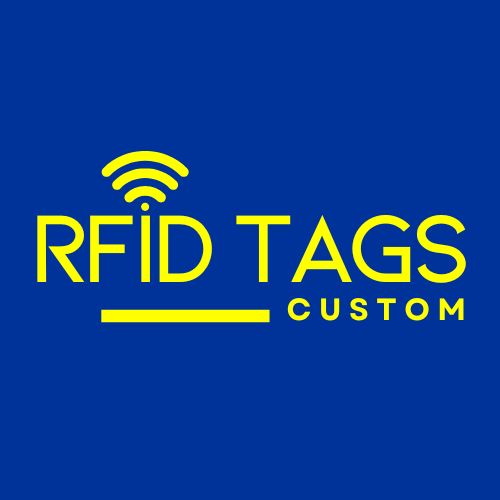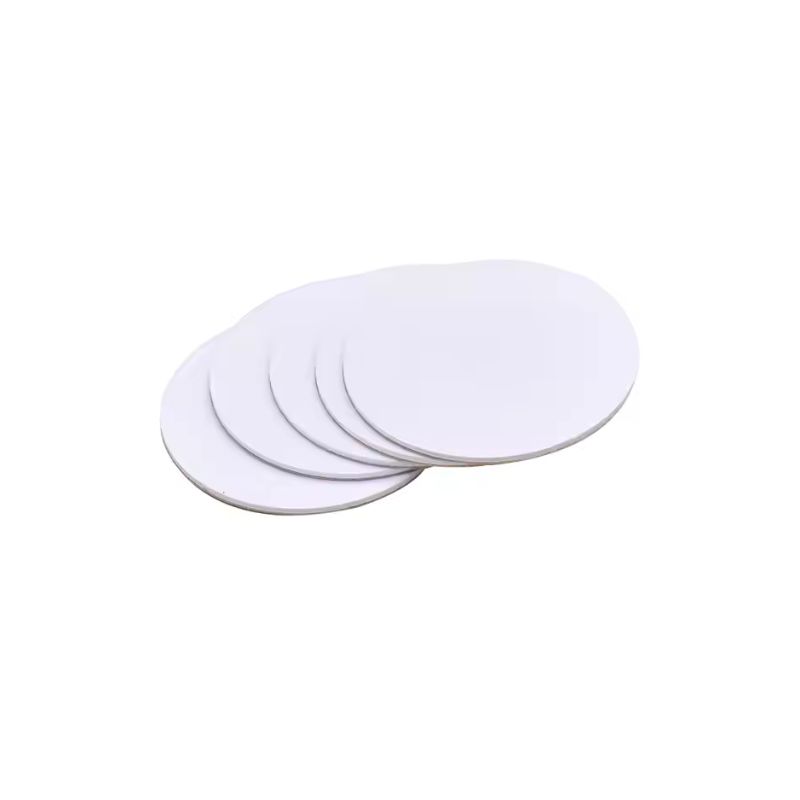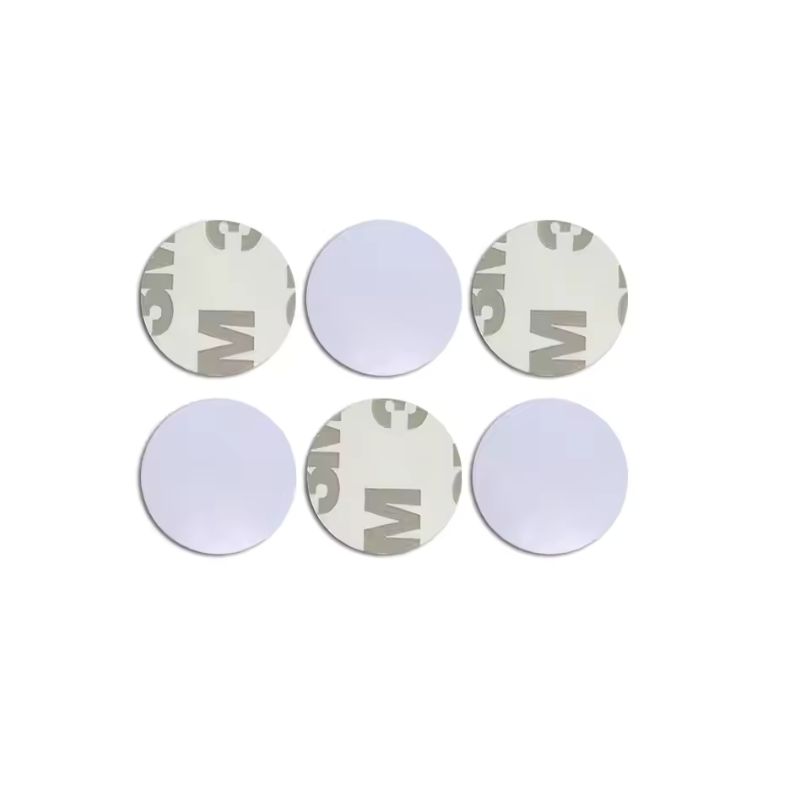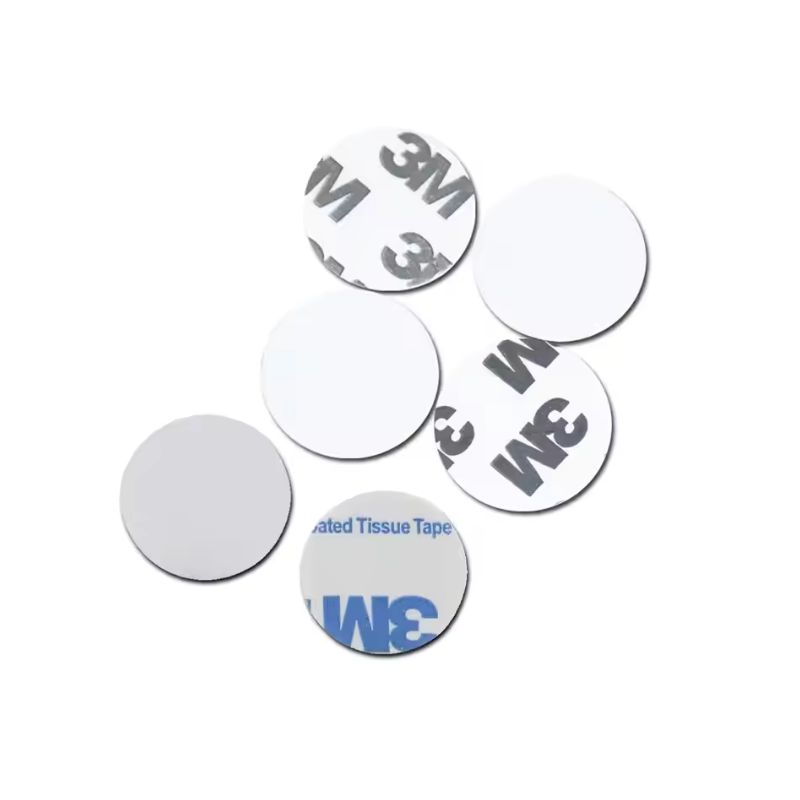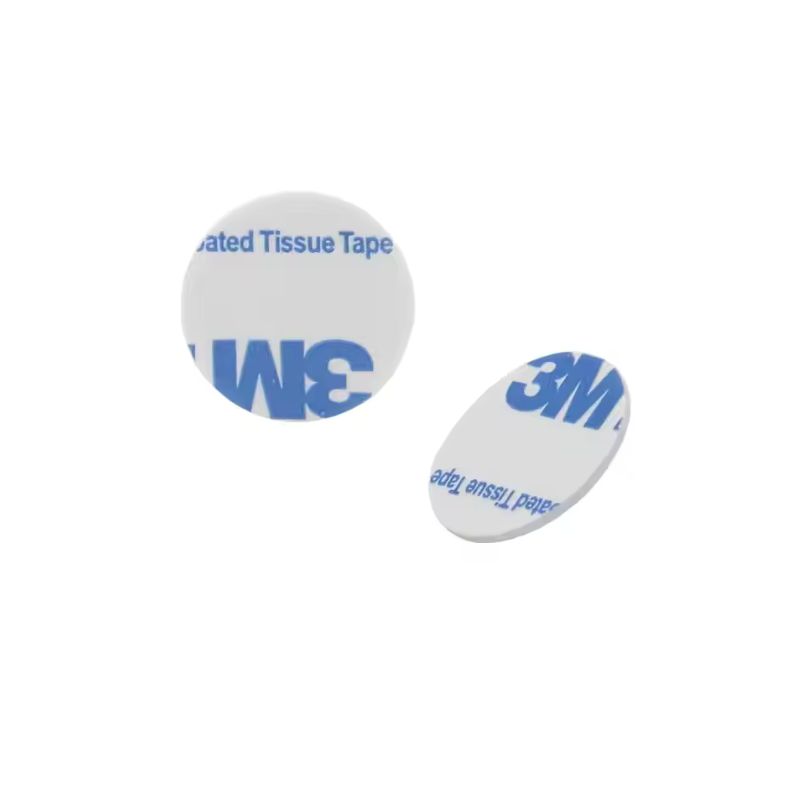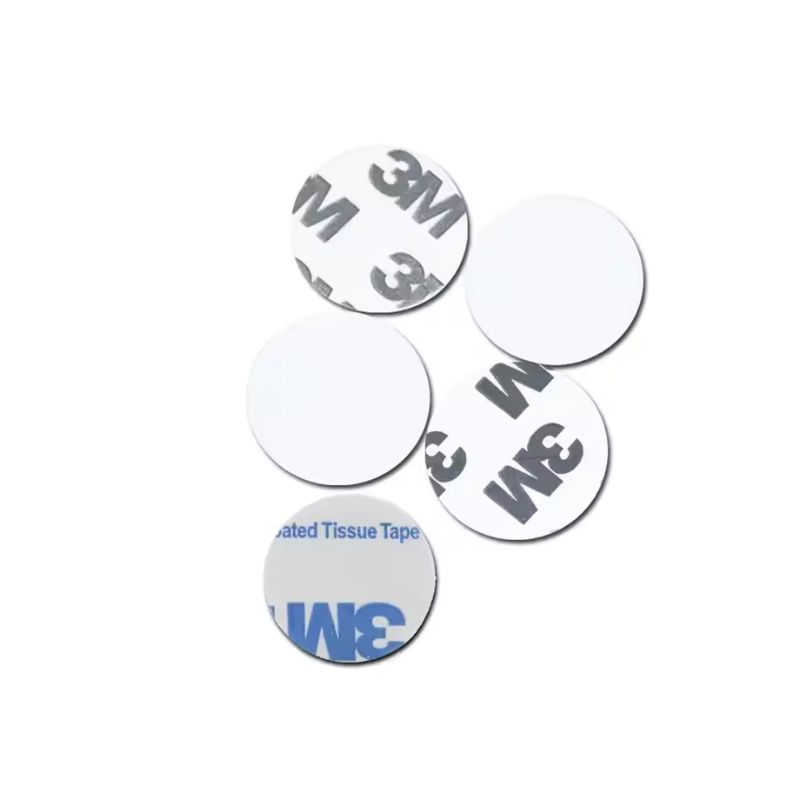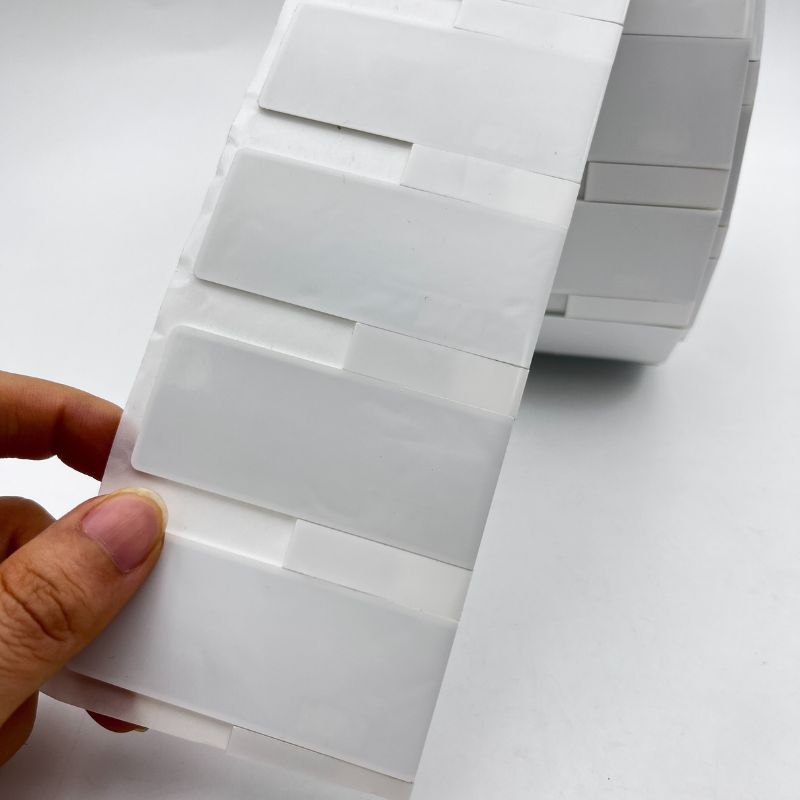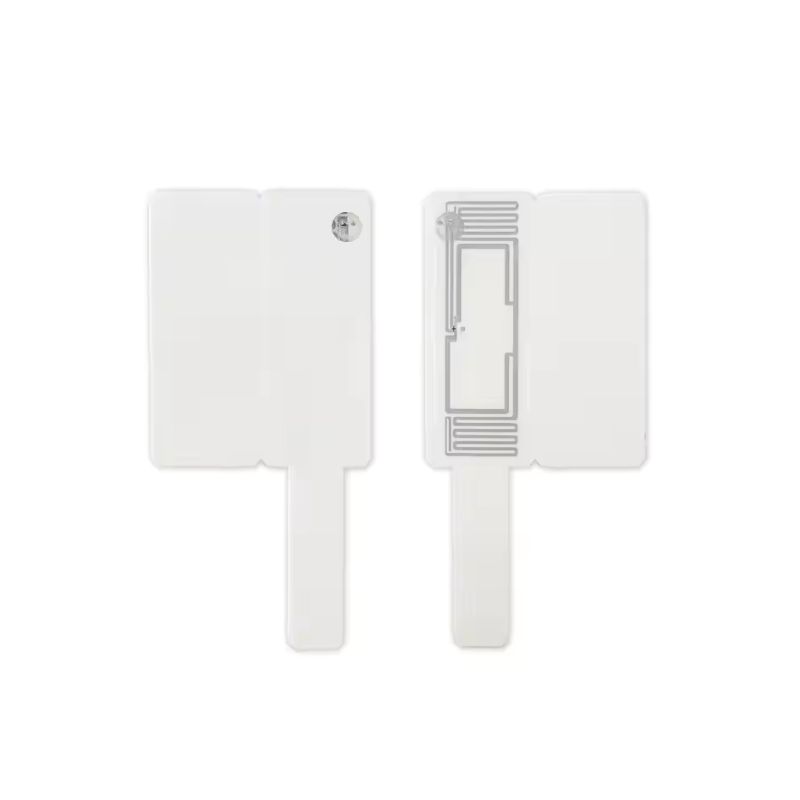
13.56mhz Anti Metal Coin NFC RFID Tag with Adhesive Sticker
NFC RFID Tag for Metal Surfaces – 13.56MHz Anti-Metal NFC Coin Tags
Upgrade your contactless tech with our advanced NFC RFID tag, purpose-built for durability, precision, and metal-compatible performance. Operating at 13.56MHz, these compact, passive anti metal NFC tags bridge the power of Near Field Communication (NFC) and RFID to provide secure, short-range, and cost-effective data exchange.
Ideal for industrial, commercial, or personal use, these rugged NFC RFID tags are optimized for asset tracking, mobile payments, and seamless IoT integration—even on metal surfaces where standard tags fail.
Key Features of Our 13.56MHz NFC RFID Tag
- Anti-Metal Compatibility
Designed specifically to function on or near metallic surfaces without interference. - Short-Range Accuracy
Ensures secure scanning within 10cm—ideal for authentication, access control, and payment terminals. - Passive Technology
No battery required. Energy is drawn from the NFC reader for hassle-free use and sustainability. - Universal Compatibility
Works with NFC-enabled smartphones, tablets, and ISO14443A-compliant systems. - Rugged Construction
Durable material withstands harsh conditions, making these anti metal NFC tags perfect for outdoor, warehouse, or equipment use. - Cost-Efficient Scalability
Low-cost production makes these NFC coin tags ideal for large-scale deployment.
Technical Specifications
| Feature | Description |
| Operating Frequency | 13.56 MHz (High Frequency) |
| Standard | ISO 14443A / NFC Forum Type 2 or Type 4 |
| Chip Options | NXP NTAG213, NTAG216, or custom |
| Read Range | Up to 10 cm (depending on reader & environment) |
| Material | ABS or epoxy resin (anti-metal shielding layer) |
| Power | Passive (no battery) |
| Diameter | 25mm / 30mm / custom sizes |
| Mounting Options | Adhesive, embedded, rivet |
| Operating Temp. | -25°C to +70°C |
Real-World Use Case
A global electronics manufacturer implemented over 15,000 anti metal NFC tags on its tooling and production equipment. This enabled:
- Accurate asset audits with NFC-enabled smartphones
- Contactless authentication at critical workstations
- Real-time tool status via NFC-linked maintenance systems
Result: 45% drop in asset misplacement and a 30% faster inventory cycle.
Applications of the NFC RFID Tag
These Anti Metal NFC tags serve multiple industries and use cases:
- Healthcare: Secure patient record access, medical device tracking
- Industrial Equipment: Track metallic assets in factories
- Retail & POS: Enable contactless payments on kiosks & checkout stations
- Access Control: Use in ID badges or smart locks
- Consumer Electronics: Device pairing, gaming, smart posters
- IoT & Automation: Link sensors, robots, or access logs with real-time NFC taps
NFC Tags vs RFID – What’s the Difference?
Understanding NFC tags vs RFID is key:
| Category | NFC | RFID |
| Range | Short (0–10cm) | Short to Long (1cm–10m+) |
| Frequency | 13.56 MHz | Varies: LF, HF, UHF |
| Use Case | Smartphones, payments | Inventory, logistics, retail |
| Device Support | Android/iOS phones | RFID readers only |
| Interactivity | Two-way (read & write) | Typically one-way (read) |
Start Smart Tagging Today
Discover the power of NFC RFID tags that work where others can’t. These anti metal NFC tags are built for accuracy, durability, and easy deployment.
FAQ
What is an NFC RFID tag?
An NFC RFID tag is a passive chip that uses 13.56 MHz frequency to communicate with smartphones or NFC readers for secure, short-range data exchange.
What makes these anti metal NFC tags different?
Unlike standard tags, these include a metal shielding layer that prevents signal disruption, ensuring reliable performance on or near metal surfaces.
How are NFC tags vs RFID different?
NFC is a subset of RFID with shorter read range but phone compatibility, while RFID spans longer ranges and broader industrial use.
Can I use my phone to scan these tags?
Yes, any NFC-enabled smartphone or tablet can scan and interact with these tags instantly.
What applications are ideal for NFC RFID tags?
They’re best for secure access, asset tracking, anti-counterfeit labeling, and contactless payments in retail, healthcare, or industrial environments.
Get Your Custom RFID Tags
As a leading custom RFID tag manufacturer, we craft solutions based on the unique needs of your operation. We offer a wide range of customization options, including material, size, frequency, encoding, and read distance, ensuring each RFID Tag is perfectly customized to your requirements. No matter what application you use RFID tags for, we can provide rugged, reliable RFID tags that meet the highest quality and durability standards. Here are the main ways we customize RFID tags to fit your needs.

Material Selection
Material is key for customizing RFID tags. Plastic works in harsh conditions, while softer materials suit delicate spaces. Different materials also affect signal performance. Pick what fits your use case to ensure your tags last and work reliably.

Customized Size
Size shapes usability. Small tags fit tight spaces or tiny items, while larger tags are easily read. In crowded areas, sleek tags prevent clashes. Align shape and dimension with your goods for visibility, convenience, and performance.

Frequency Requirements
Choose LF, HF, or UHF based on read range, speed, and interference. LF and HF resist metals and liquids but have shorter ranges. UHF offers an extended range yet may face signal blocks. Match frequency to your environment for reliable performance.

Reading Distance
Define the distance at which you have to read the tag. Short distances work for retail checkouts, while warehouses may need meters of coverage. Antenna design, reader settings, and power outputs affect range.Adjust these factors to capture data accurately at the distance you need.

Encode
Plan how data is stored on each tag. Some only hold an ID, while others contain detailed info. Decide if you need a simple EPC or added user memory. Ensure your chosen format works with existing software. Proper encoding streamlines processes and slashes errors.

Application Environment
Consider real-world conditions. Temperature swings, humidity, and chemicals can degrade tags. For outdoor use, opt for UV-resistant casings. In healthcare or food settings, ensure compliance with safety rules. Matching your tags to the environment maximizes their lifespan.
Related Products
Customize any RFID tags from our factory to meet your requirements.
